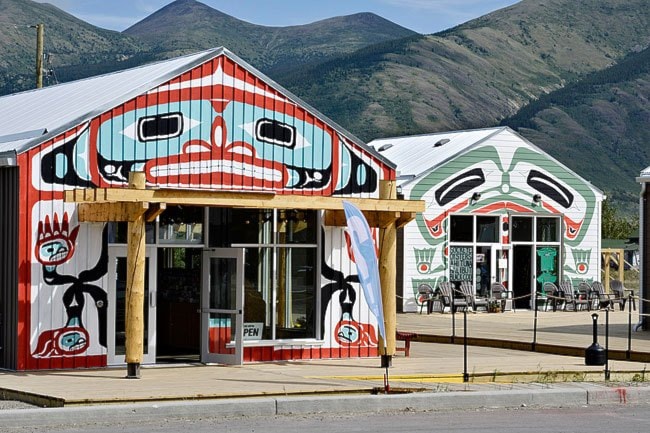The latest piece of the Carcross-Tagish First Nation’s economic development plan is drawing fire from some Carcross residents.
Daphne Mennell said plans to change the zoning of land along Bennett Lake at the north end of Tagish Ave. to allow for more waterfront property will be disastrous for the Carcross Dunes and local ski trails.
“It’s just outrageous. People think it’s sand, there’s nothing to hurt. Vegetation is easily eradicated. Once you remove that ancient layer of vegetation, the dunes will start to move again,” she said.
Mennell is an artist who has lived in the area for 40 years. She said she draws great comfort and inspiration from the area, and she’s worried that development in the dunes will destroy a sensitive ecosystem.
She and about 25 other local artists will meet in the dunes area on Sunday to capture the area’s beauty before it is lost forever, Mennell said.
The plans to develop the land are part of the First Nation’s larger economic revitalization plan, which also includes the recently opened Carcross Commons market, over 60 kilometres of mountain bike trails and future plans for an eco-resort farther down Bennett Lake.
“We want to see the whole dunes area turned into a park, and create sustainable development from that,” Mennell said.
“The idea is that CTFN will build these houses and then lease or sell them to people, so I don’t see it really profiting the town as a whole. It’s going to be a few rich people on the beach, maybe a few CTFN members who want property on the beach,” Mennell said.
Mennell and her husband were part of a push to have the Carcross Dunes area designated a protected site back in the 1980s, she said. She worries that residents in town don’t realize the extent of what’s being planned.
What is planned is 400 metres of lakeside property development that barely reaches into the dunes at all, said Justin Ferbey, the CEO of the Carcross Tagish Development Corporation and the man behind the plan.
Plans have been widely publicized and have received plenty of public input so far, said Ferbey.
The proposal is two-fold, he explained. The land along the waterfront belongs to the First Nation. The land immediately behind it, extending off the end of Tagish Ave, belongs to the Yukon government, but there is already a road right-of-way there as part of the local area plan that has been approved for the past two years.
The housing developments will be put on the open market, after they are built by local contractors and apprentices, said Ferbey. The whole plan is to help bolster Carcross’s economy, he said.
More than that, though, he said that people need to understand that the land in question is CTFN traditional territory, and the decisions of its government need to be respected.
“I think people have this romanticized notion of what we as First Nations should be. We were always traders.
“I was speaking with one woman and mentioned that we’re a government doing what governments do, and she said, ‘I prefer to call you a band,’” Ferbey said.
When Chief Danny Cresswell was elected, he won with a majority that would have beaten all the other candidates combined, and he ran on a pro-development platform, Ferbey said. That gives him a mandate to pursue this kind of work.
“When the premier wins a majority government, he gets a mandate to govern,” Ferbey said.
When the community first heard about these plans, Ferbey said there was a lot of concern about condos going up and the Bennett Lake beach access being restricted.
To help mitigate those concerns, the First Nation is voluntarily creating a 15-metre buffer around all of its planned developments, said Jerome McIntyre, Yukon’s director of land use planning.
McIntyre said that Carcross needs new housing, and the First Nation plan is a good way to help provide it.
“Carcross has an average growth rate of between one and 1.6 per cent. Over a 20-year period, it would suggest that the population would grow between 80 to 104 new residents. When you apply that to the current housing density, it means around 40 to 70 new dwellings,” McIntyre said.
He said that finding somewhere to put those new dwellings is a particular challenge in Carcross, because the area is hemmed in by two lakes, mountains and the dunes network. When the First Nation presented its request for a zoning amendment during the local area planning process, it actually went a long way to helping develop a viable plan, he said.
The road access needed to develop the property still has to be presented for cabinet approval, and the housing development will be subject to a YESAB assessment. Ferbey said they hope to begin road construction this fall, but that the First Nation will hold more voluntary public input sessions as the project moves forward.
Contact Jesse Winter at
jessew@yukon-news.com
